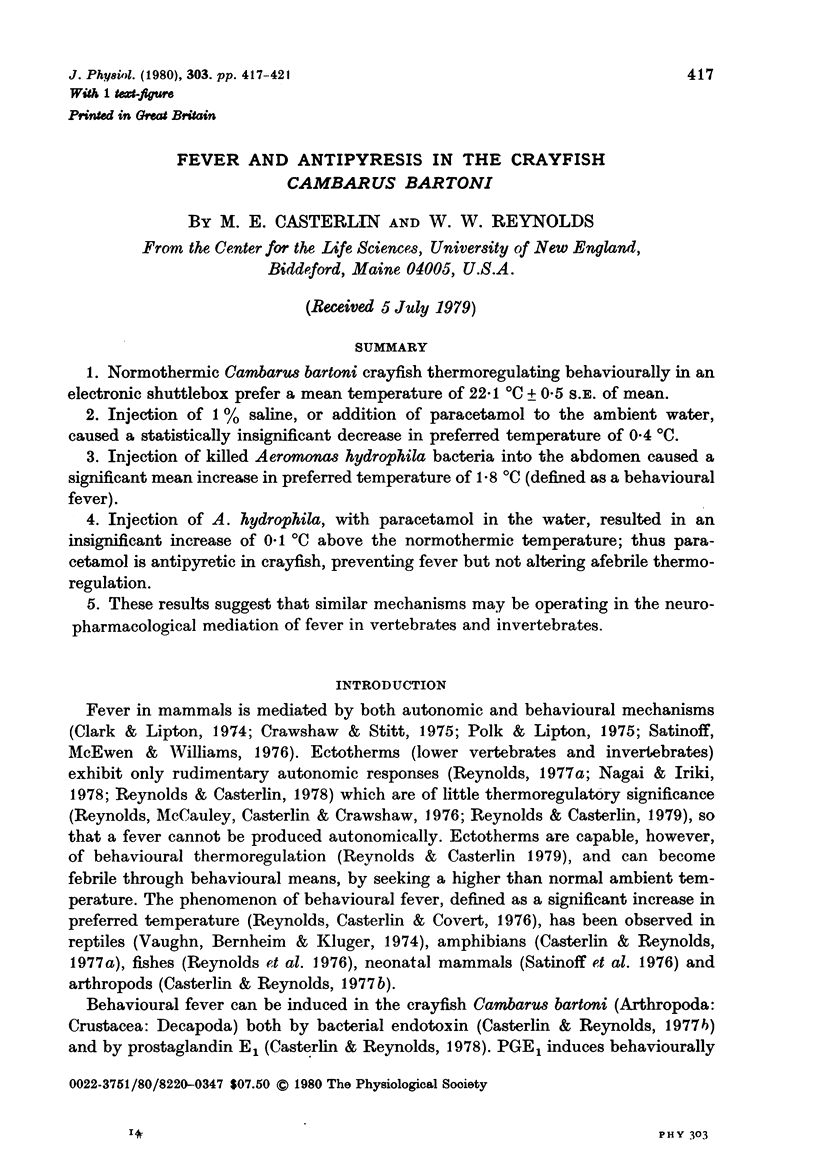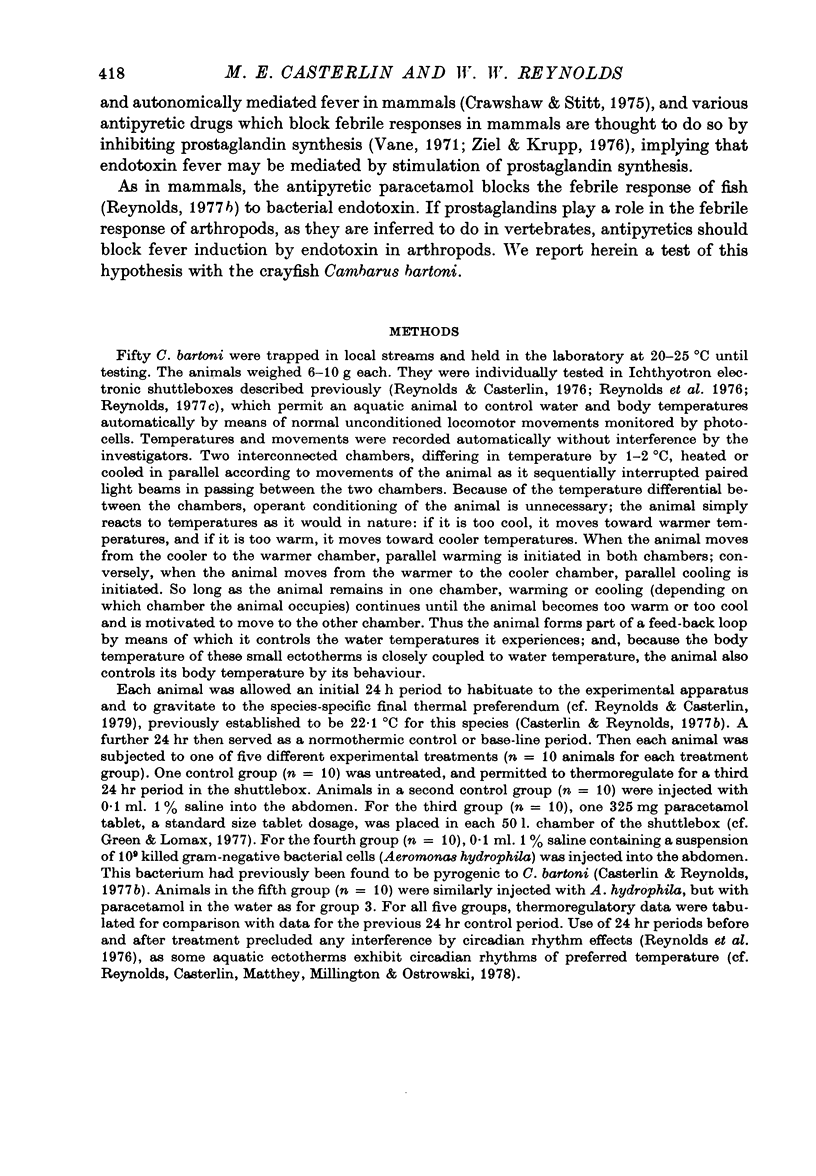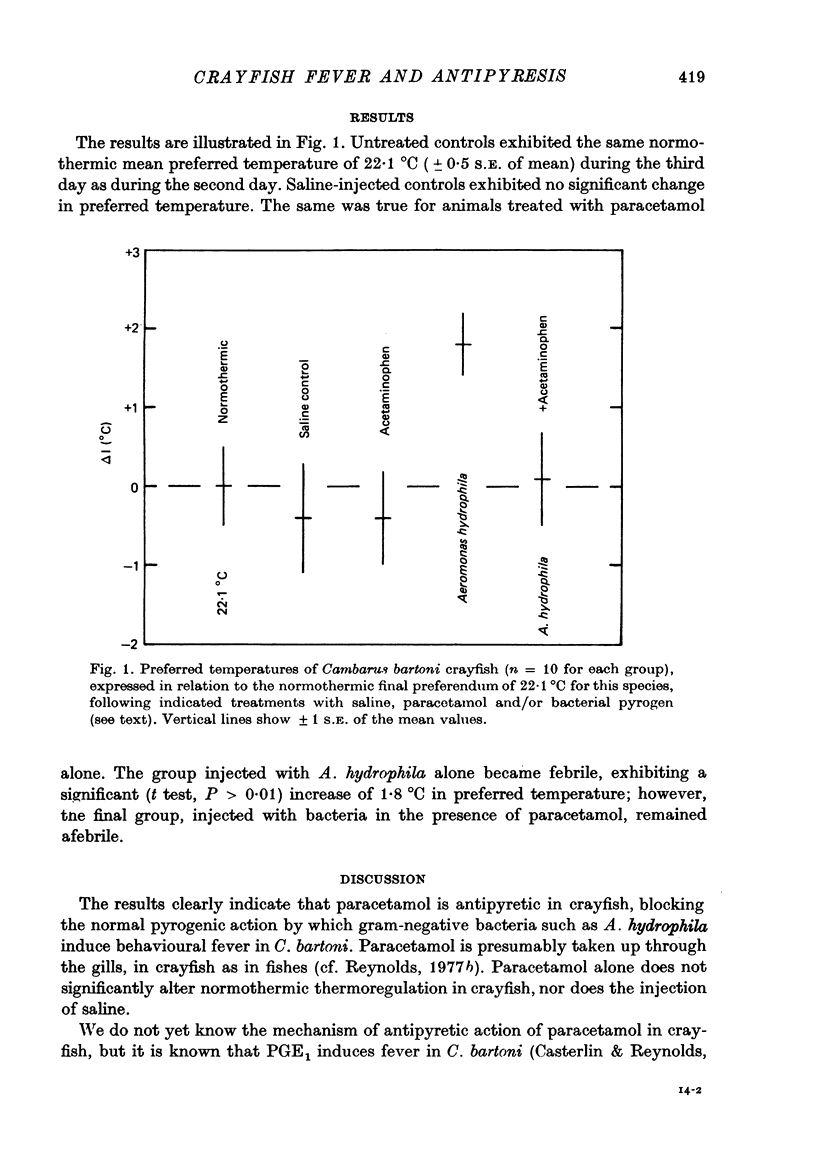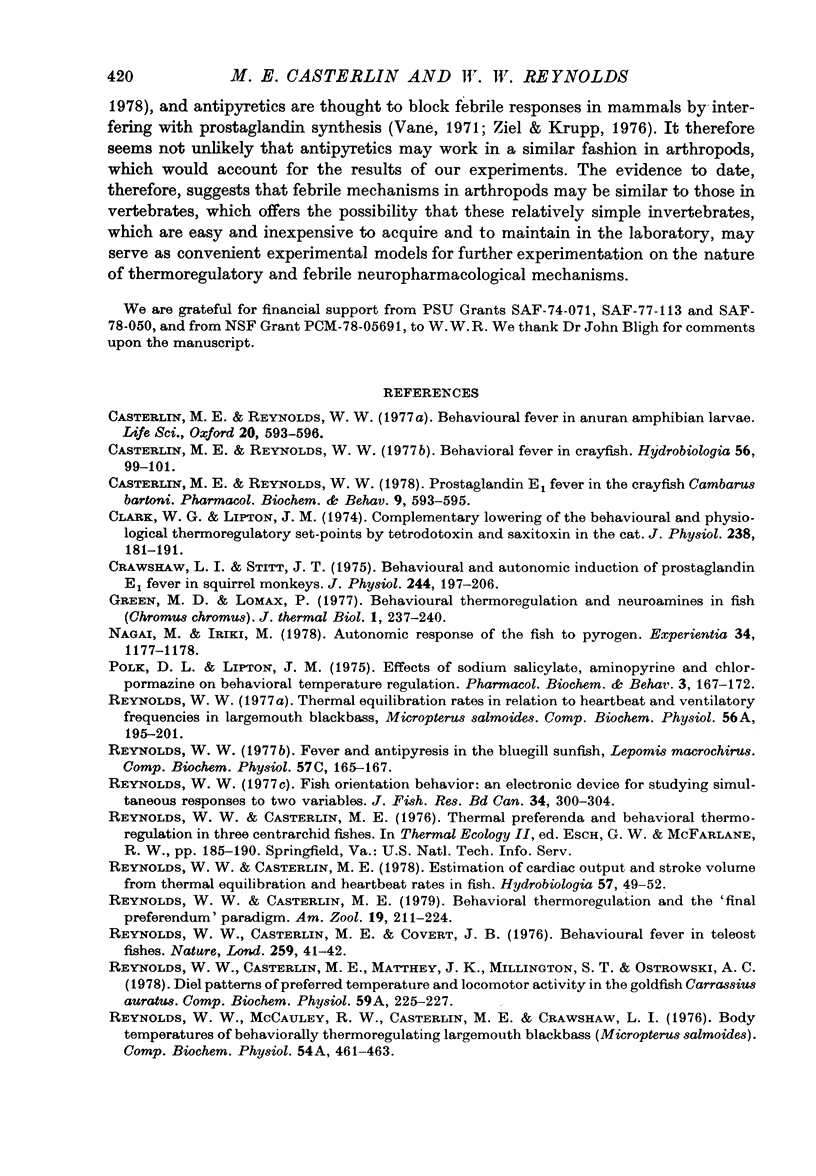Abstract
1. Normothermic Cambarus bartoni crayfish thermoregulating behaviourally in an electronic shuttlebox prefer a mean temperature of 22.1 degrees C +/- 0.5 S.E. of mean. 2. Injection of 1% saline, or addition of paracetamol to the ambient water, caused a statistically insignificant decrease in preferred temperature of 0.4 degrees C. 3. Injection of killed Aeromonas hydrophila bacteria into the abdomen caused a significant mean increase in preferred temperature of 1.8 degrees C (defined as a behavioural fever). 4. Injection of A. hydrophila, with paracetamol in the water, resulted in an insignificant increase of 0.1 degrees C above the normothermic temperature; thus paracetamol is antipyretic in crayfish, preventing fever but not altering afebrile thermoregulation. 5. These results suggest that similar mechanisms may be operating in the neuropharmacological mediation of fever in vertebrates and invertebrates.
Full text
PDF




Selected References
These references are in PubMed. This may not be the complete list of references from this article.
- Casterlin M. E., Reynolds W. W. Behavioral fever in anuran amphibian larvae. Life Sci. 1977 Feb 15;20(4):593–596. doi: 10.1016/0024-3205(77)90461-1. [DOI] [PubMed] [Google Scholar]
- Casterlin M. E., Reynolds W. W. Prostaglandin E1 fever in the crayfish Cambarus bartoni. Pharmacol Biochem Behav. 1978 Nov;9(5):593–595. doi: 10.1016/0091-3057(78)90208-3. [DOI] [PubMed] [Google Scholar]
- Clark W. G., Lipton J. M. Complementary lowering of the behavioural and physiological thermoregulatory set-points by tetrodotoxin and saxitoxin in the cat. J Physiol. 1974 Apr;238(1):181–191. doi: 10.1113/jphysiol.1974.sp010517. [DOI] [PMC free article] [PubMed] [Google Scholar]
- Crawshaw L. I., Stitt J. T. Behavioural and autonomic induction of prostaglandin E-1 fever in squirrel monkeys. J Physiol. 1975 Jan;244(1):197–206. doi: 10.1113/jphysiol.1975.sp010791. [DOI] [PMC free article] [PubMed] [Google Scholar]
- Nagai M., Iriki M. Autonomic response of the fish to pyrogen. Experientia. 1978 Sep 15;34(9):1177–1178. doi: 10.1007/BF01922942. [DOI] [PubMed] [Google Scholar]
- Polk D. L., Lipton J. M. Effects of sodium salicylate, aminopyrine and chlorpromazine on behavioral temperature regulation. Pharmacol Biochem Behav. 1975 Mar-Apr;3(2):167–172. doi: 10.1016/0091-3057(75)90143-4. [DOI] [PubMed] [Google Scholar]
- Reynolds W. W., Casterlin M. E., Covert J. B. Behavioural fever in teleost fishes. Nature. 1976 Jan 1;259(5538):41–42. doi: 10.1038/259041a0. [DOI] [PubMed] [Google Scholar]
- Reynolds W. W., McCauley R. W., Casterlin M. E., Crawshaw L. I. Body temperatures of behaviorally thermoregulating largemouth blackbass (Micropterus salmoides). Comp Biochem Physiol A Comp Physiol. 1976;54(4):461–463. doi: 10.1016/0300-9629(76)90050-5. [DOI] [PubMed] [Google Scholar]
- Satinoff E., McEwen G. N., Jr, Williams B. A. Behavioral fever in newborn rabbits. Science. 1976 Sep 17;193(4258):1139–1140. doi: 10.1126/science.959829. [DOI] [PubMed] [Google Scholar]
- Vane J. R. Inhibition of prostaglandin synthesis as a mechanism of action for aspirin-like drugs. Nat New Biol. 1971 Jun 23;231(25):232–235. doi: 10.1038/newbio231232a0. [DOI] [PubMed] [Google Scholar]
- Vaughn L. K., Bernheim H. A., Kluger M. J. Fever in the lizard Dipsosaurus dorsalis. Nature. 1974 Dec 6;252(5483):473–474. doi: 10.1038/252473a0. [DOI] [PubMed] [Google Scholar]


